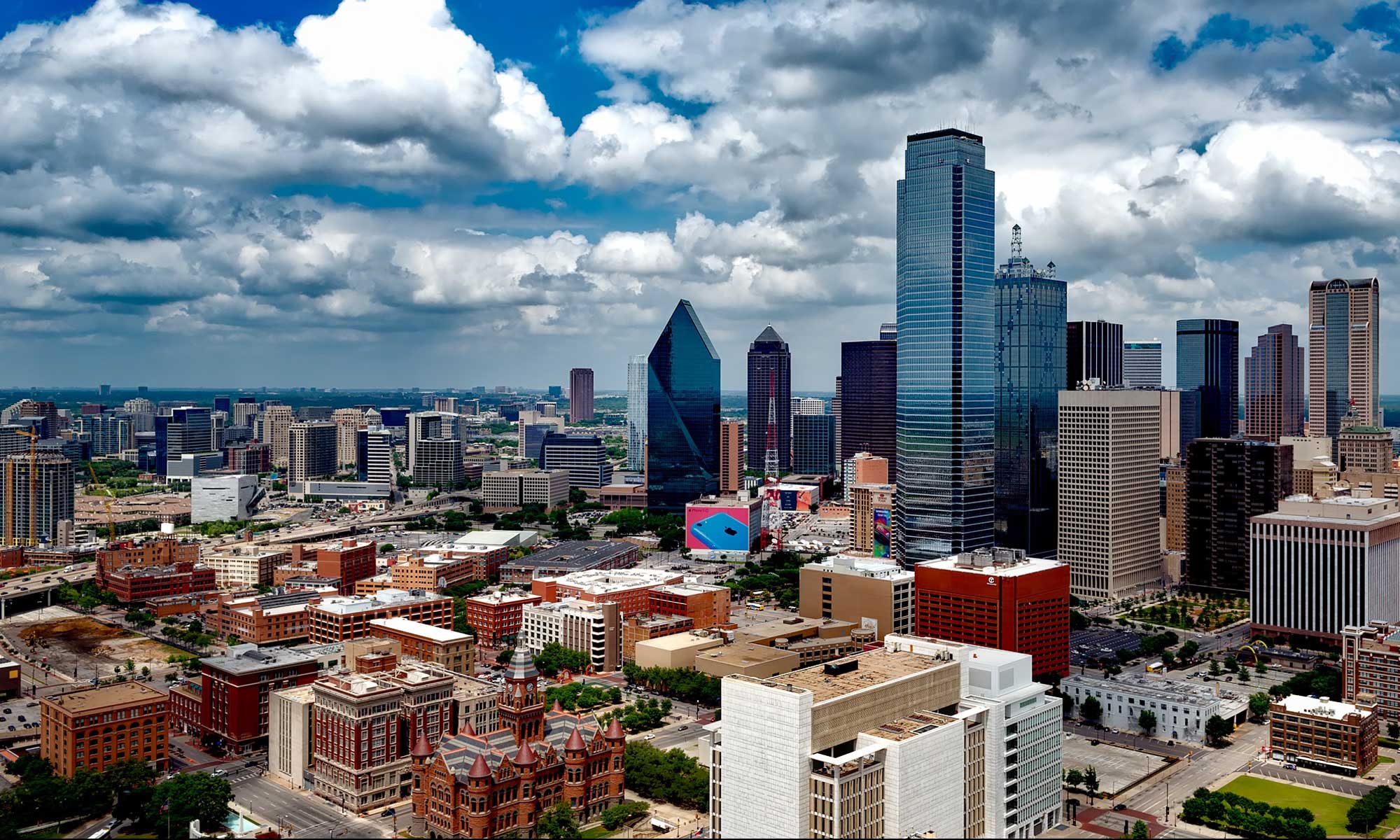I’m not sure exactly why, but for some reason most museums seem paranoid that you’re going to steal their ideas, or even their properties somehow, if you take a camera onto the premises. That’s certainly the case with the National Cowgirl Museum and Hall of Fame, which is dedicated to the women of the American West. It’s located in Fort Worth just across the street from the Will Rogers Memorial Center, where they hold the Fort Worth Stock Show every year. It’s also conveniently near the Fort Worth Museum of Science and History (FWMSH), which is currently in ruins as they expand and renovate.
Here’s what the National Cowgirl Museum and Hall of Fame looks like from the outside. It’s a well-done pale-brown brick building with what appear, to me, to be Art Deco features — not that I’m an architect or anything, but if you’ve read many of these reviews, you know how I am. It’s kind of hard to see in this photo, but if you peer closely at the plinth there at the top of the building, you’ll see that it was originally called the Nancy Lee Bass Cowgirl Hall. Yep, that’s the same Nancy Lee Bass whose name appears on the Bass Performance Hall in downtown Fort Worth. The Museum itself was established in 1975; I don’t know how old the building is.
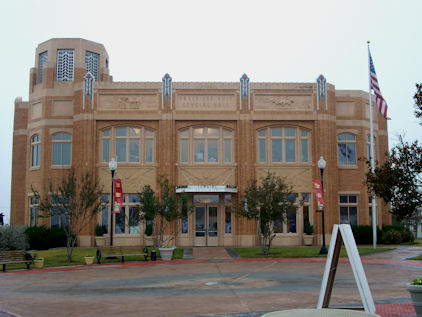
Here’s what the entryway looks like. I like the retro look to the marquee and, actually, the other decorative elements too.
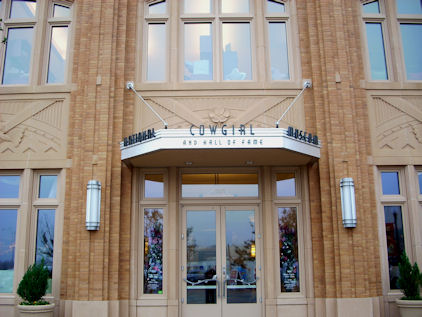
But before we go in, you and I, allow me to divert your attention to this breathtaking bronze sculpture located a bit to the left of the entry. It’s titled “High Desert Princess,” and it’s by the noted Western artist Mehl Lawson. It was installed here in 2003. I think it’s impressive, and I could almost feel the wind as I was looking at it.
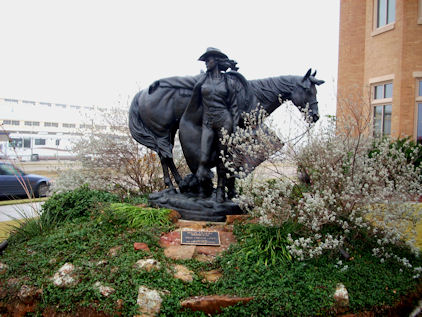
Now that you too have been awed, let’s step inside. The interior of the building is open and airy, with a high ceiling. Beyond the foyer is the museum area, which is arrayed around a circular atrium that’s quite classically influenced. There are two floors of exhibits. The first floor is partly taken up by a preview of exhibits from the FWMSH, which I didn’t bother with; I’ll wait to review them in detail when the big museum’s back in order. In any case, here’s what the entranceway to the Cowgirl Museum looks like.
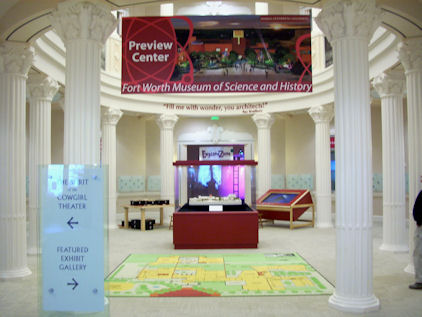
Sadly, that’s about all I’m allowed to show you, since the standard museum no-photography rule was very much in effect (*sigh*).
I was particularly taken by the large glass portraits on the walls of the upstairs mezzanine, just below the railing, which you can view from either floor as you walk around the museum. I wish I had a photo, but oh well. Somehow, the artist has managed to superimpose several images on each glass, so that they change as you walk around the atrium. There are display cases imbedded here and there on the walls, of course, along with plaques, photographs, and poster displays extolling various Western women; but most of the exhibits are in various halls that open off the atrium. As you might expect, there’s a plethora of artifacts, graphic images, and even video presentations chronicling working cowgirls, modern and otherwise; and rodeo cowgirls don’t go wanting. A few of the items, such as rodeo cowgirl advertisements for Wrangler jeans, I’d already seen at the Texas Cowboy Hall of Fame. However, they also have a fairly extensive exhibit dedicated to women who starred in Western films, like Dale Evans and Barbara Stanwyck.
This broad definition of what comprises a “cowgirl” is rather typical of the National Cowgirl Museum and Hall of Fame. Not only do they include rodeo stars like Tad Lukas, as well as women who actually lived and worked on ranches and farms, they basically include anyone female and human who lived on the frontier. For example, all the women in the family of Laura Ingalls Wilder, the famous author who chronicled her life on the frontier, are included — right down to her mom and little Carrie. They were settlers, really, but definitely part of that frontier spirit that moved white settlement west to fill up the entire continent.
This was at the expense of the Native Americans, I might add, at least one of whom they’ve managed to include in their definition of a cowgirl, at least peripherally. I’m referring to Sacagawea, the famous young guide who led Lewis and Clark on their long journey west, carrying and caring for her baby son Pompy* all the way. Apparently, Sacagawea is a cowgirl by their definition, and they’ve got a larger-than-life statue of her in their lobby, which was one of the few things I was allowed to photograph.
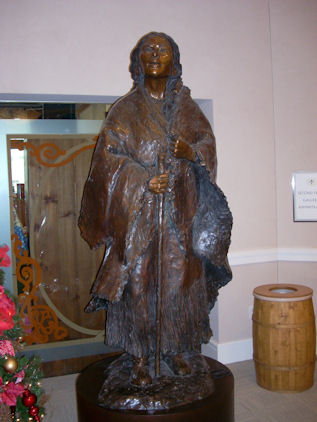
They’re also quite proud of the fact that she’s on the golden dollar coin, and have a couple on display. Now, I can’t see how they can include most other Native American women in the definition, unless — like Sacagawea — they had married into a white family. Given her contributions to the Lewis and Clark expedition (among other things, she risked her life to rescue their field journals in a raging river), she may be considered by the Museum to be an honorary cowgirl.
The National Cowgirl Museum and Hall of Fame is an enjoyable place to spend an hour or two if you’re in the neighborhood. It’s open Monday-Saturday, 9 AM-5 PM, and Sundays 12-5 PM. Admission is $8 for adults, $7 for seniors over 60 and kids 3-12, and free for younger kids. It’s located at 1720 Gendy Street in Fort Worth, in close proximity to the Will Rogers Memorial Center, Amon Carter Museum, Kimball Art Museum, and the Fort Worth Museum of Science and History (what’s left of it). For more information, check their website at http://www.cowgirl.net/generalinfo.asp.
*Interestingly enough, Pompy was later formally educated at the expense of Clark himself. He even lived in Europe for six years.
